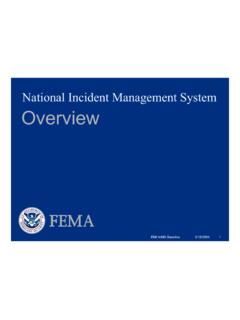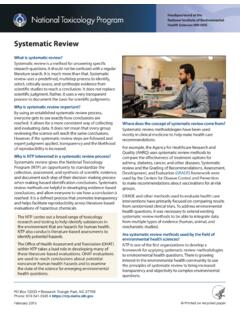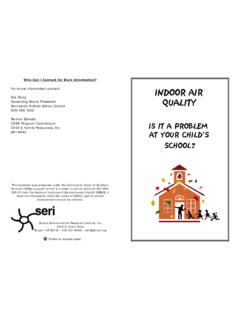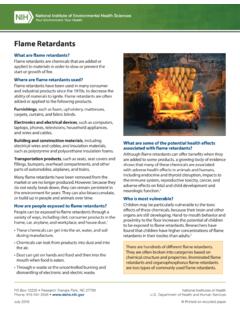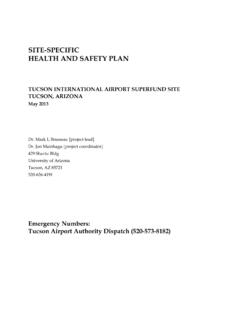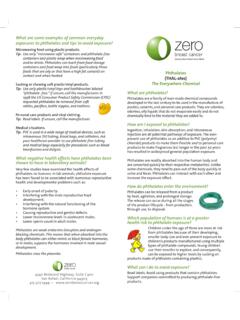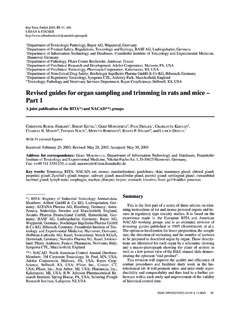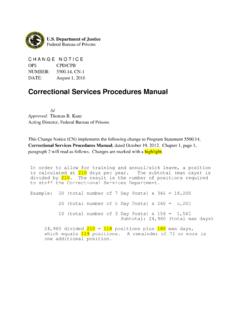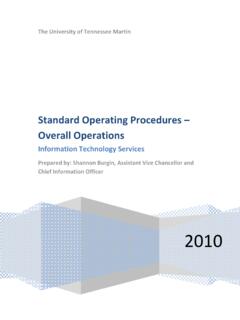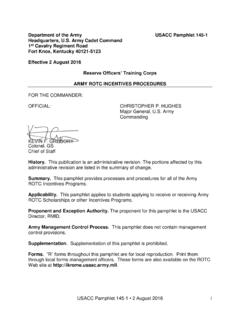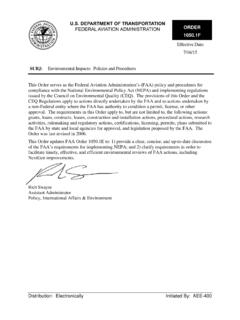Transcription of muscle grading and testing procedures
1 MANUAL muscle testing procedures Key to muscle grading Function of the muscle Grade No contractions felt in the muscle 0 0 Zero No Movement Tendon becomes prominent or feeble contraction felt in the muscle , but no visible movement of the part T 1 Trace MOVEMENT IN HORIZONTAL PLANE Moves through partial range of motion 1 2- Poor- Moves through complete range of motion 2 2 Poor ANTIGRAVITY POSITION Test Movement Moves through partial range of motion 3 2+ Gradual release from test position 4 3- Fair- Holds test position (no added pressure) 5 3 Fair Holds test position against slight pressure 6 3+ Fair+ Holds test position against slight to moderate pressure 7 4- Good- Holds test position against moderate pressure 8 4 Good Holds test position against moderate to strong pressure 9 4+ Good+ Test Position Holds test position against strong pressure 10 5 Normal Modified from 1993 Florence P.
2 Kendall. Author grants permission to reproduce this chart IMACS FORM 04: MANUAL muscle testing procedures 1 Preferred testing Order of muscle Groups. This table provides a preferred order to the testing of muscle groups for manual muscle testing . Generally, for bilateral muscle testing , each muscle group is first tested on the right and then the left, prior to proceeding to the next muscle group in the list. Some muscle groups are listed here with anti-gravity testing , but for a weaker patient, these would be tested in a sidelying or supine position, per the table below ( testing Positions); the re-test for a weaker patient is indicated in gray scale.
3 The ankle plantar flexors are first tested in prone, and then retested in standing for scoring purposes. Abbreviations: , gravity eliminated. POSITION ORDER OF testing SITTING Trapezius (shoulder elevators) 1 Deltoid middle (shoulder abductors) 2 Biceps brachii (elbow flexors) 3 Wrist extensors (extensor carpi ulnaris/radialis) 4 Wrist flexors (flexor carpi radialis/ulnaris)
4 5 Iliopsoas (hip flexors) 6 Qudriceps femoris (knee extensors) 7 Ankle dorsiflexors (tibialis anterior) 8 SUPINE Neck flexors (scalenes, sternocleidomastoid) 9 Trapezius ( test if needed) - Deltoid middle ( test if needed) - Gluteus medius ( test if needed) - SIDELYING (lying on left side-right muscles tested) Gluteus medius (hip abductors) 10 Iliopsoas ( test if needed) - Gluteus maximus ( test if needed) - Hamstrings ( test if needed) - Biceps brachii ( test if needed) - Neck flexors ( test if needed) - Neck extensors ( test if needed) - PRONE Neck extensors (longissimus, semispinalis, illiocostaliis, splenius cervicis) 11 Gluteus maximus (hip extensors) 12 Hamstrings (knee flexors) 13 Ankle plantarflexors (initial test.)
5 Gastrocnemius) 14 SIDELYING (lying on right side-left muscles tested) Gluteus medius (hip abductors) 15 Iliopsoas ( test if needed) - Quadriceps ( test if needed) - Gluteus maximus ( test if needed) - Hamstrings ( test if needed) - Biceps brachii ( test if needed) - Ankle dorsiflexors ( test if needed) - STANDING Ankle plantarflexors (second test if needed) 16 IMACS FORM 04: MANUAL muscle testing procedures 2 testing POSITIONS muscle Groups Anti-Gravity Gravity Eliminated Trapezius (shoulder elevators) Sitting Supine Deltoid middle (shoulder abductors) Sitting Supine Biceps brachii (elbow flexors) Sitting Sidelying Wrist extensors Sitting (pronation) Sitting (neutral) Wrist flexors Sitting (supination) Sitting (neutral) Iliopsoas (hip flexors) Sitting Sidelying Quadriceps femoris (knee extensors)
6 Sitting Sidelying Ankle dorsiflexors Sitting Sidelying Neck flexors Supine Sidelying Gluteus medius (hip abductors) Sidelying Supine Neck extensors Prone Sidelying Gluteus maximus (hip extensors) Prone Sidelying Hamstrings (knee flexors) Prone Sidelying Ankle plantarflexors Prone/Standing Sidelying MMT Considerations to Promote Reliability MMT Grades (0 10 scale) Comments 0 T Palpation skill may confound the distinction between the 0 and T score; use trained and experienced clinicians.
7 1 2 Adjust range of motion criterion to accommodate for muscle contractures. 3 This grade can only be assigned to muscles tested in the standard (against gravity) testing position. 4 Gradual descent from testing position to resting position should last at least 3 seconds 5 Test position should be held for 3 seconds 3 5 MMT grades in this range should be re-tested for the next highest grade after 60 seconds of recovery time. 6 10 MMT grades in this range are heavily influenced by the stature of the subject and tester. Attempt to use back-up testers of a similar stature to the primary tester. All MMT in this range should involve a force application time of 3 seconds.
8 IMACS FORM 04: MANUAL muscle testing procedures 3 JUVENILE MYOSITIS: STANDARDIZATION OF MMT COMMANDS. The following are suggested commands for manual muscle testing in pediatric patients. Variation in the text is acceptable, but the concepts are intended to be uniform between patients. The instructions would be different for gravity-eliminated testing : I m going to see how strong you are. When I tell you hold and don t let me push you, you try really, really hard not to let me move you. You need to be strong like a tree or a power ranger (use these examples to motivate the child). 1. Upper Trapezius: Now watch me, turn your head like I do and shrug your shoulder up (demonstrate test position).
9 Now I m going to try to push your shoulder and head apart and you hold it and don t let me push it apart. 2. Deltoid middle: Hold your arm up in the air like this (demonstrate), and I m going to push down here and you hold it. Don t let me push it down, hold it up there as hard as you can. 3. Biceps brachii: Bend your elbow, now don t let me pull your arm down. Hold it hard and don t let me pull it out. 4. Wrist extensors: Bring your hand back like this (demonstrate) and hold it while I try to straighten it out. Don t let me straighten your hand. Be strong. 5. Wrist flexors: Bring your hand like this (demonstrate) and hold it while I try to straighten it.
10 Don t let me straighten your hand. Be strong. 6. Iliopsoas: Let s have you sit. Can you bring your knee up in the air like this (demonstrate)? Hold it up there while I try to push it down. Hold it hard and don t let me push it down. 7. Quadriceps: (Sitting) Kick your leg out so it is straight. Now hold it straight while I try to bend your knee. Be strong and keep it straight. 8. Ankle dorsiflexors: Bring your foot up like this (demonstrate), now hold it while I try to push it down. Don t let me push it down. 9. Neck flexors: (Supine) Bring your head up off the table, now hold it up there. Now hold it up there while I try to push it down and don t let me push it.
